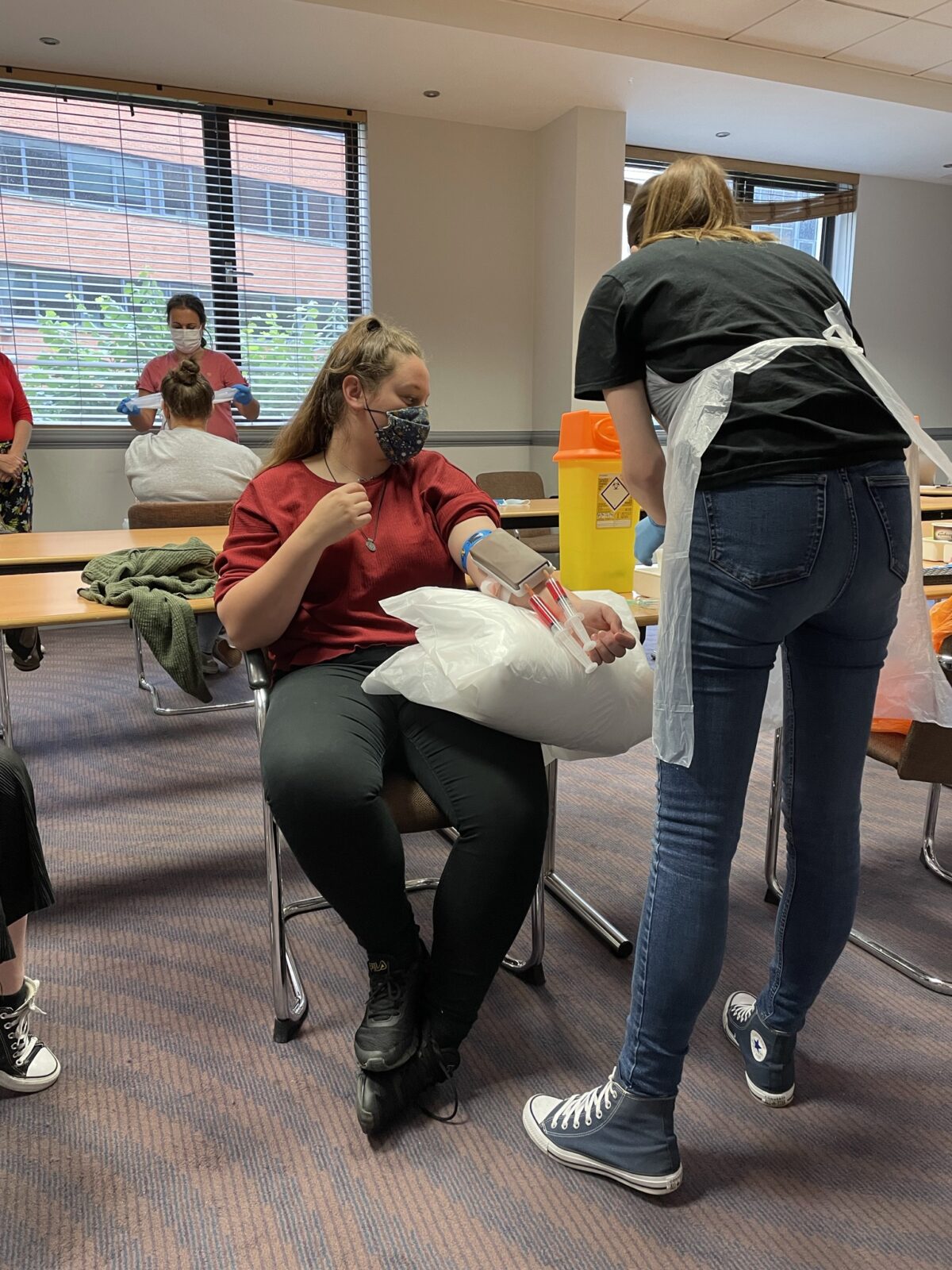The Main Principles Of Northeast Medical Institute - New Haven Campus Phlebotomy Course & Cna Class
The Main Principles Of Northeast Medical Institute - New Haven Campus Phlebotomy Course & Cna Class
Blog Article
Northeast Medical Institute - New Haven Campus Phlebotomy Course & Cna Class for Beginners
Table of ContentsFacts About Northeast Medical Institute - New Haven Campus Phlebotomy Course & Cna Class UncoveredThe Best Guide To Northeast Medical Institute - New Haven Campus Phlebotomy Course & Cna ClassGetting The Northeast Medical Institute - New Haven Campus Phlebotomy Course & Cna Class To WorkMore About Northeast Medical Institute - New Haven Campus Phlebotomy Course & Cna ClassNortheast Medical Institute - New Haven Campus Phlebotomy Course & Cna Class for BeginnersExcitement About Northeast Medical Institute - New Haven Campus Phlebotomy Course & Cna Class
The use of such gadgets must be gone along with by other infection avoidance and control practices, and training in their use.For setups with reduced resources, expense is a driving aspect in purchase of safety-engineered tools. Where safety-engineered tools are not readily available, skilled use of a needle and syringe is acceptable.
One of the essential pens of top quality of care in phlebotomy is the involvement and teamwork of the patient; this is equally advantageous to both the health and wellness worker and the individual. Clear info either composed or spoken must be readily available to each patient who undergoes phlebotomy. Annex F supplies sample text for discussing the blood-sampling procedure to a person. In the blood-sampling room for an outpatient department or clinic, supply a comfy reclining couch with an arm rest.
What Does Northeast Medical Institute - New Haven Campus Phlebotomy Course & Cna Class Mean?
Guarantee that the indications for blood sampling are plainly specified, either in a created protocol or in documented directions (e.g. in a research laboratory kind). Gather all the tools required for the procedure and location it within secure and easy reach on a tray or trolley, making certain that all the products are plainly noticeable.
Where the patient is adult and aware, follow the actions detailed listed below. Introduce yourself to the patient, and ask the client to specify their complete name. Inspect that the lab kind matches the person's identification (i.e. match the person's details with the lab type, to make sure exact recognition). Ask whether the patent has allergies, phobias or has ever fainted during previous injections or blood draws.
Make the client comfortable in a supine placement (if possible). The individual has a right to reject an examination at any kind of time prior to the blood sampling, so it is important to make sure that the individual has actually understood the procedure - Phlebotomy Courses.
Northeast Medical Institute - New Haven Campus Phlebotomy Course & Cna Class Things To Know Before You Get This
Expand the client's arm and examine the antecubital fossa or lower arm. Situate a capillary of a good size that is visible, straight and clear. The representation in Area 2.3, reveals common positions of the vessels, however lots of variants are feasible. The average cubital capillary exists in between muscles and is typically one of the most very easy to penetrate.
DO NOT insert the needle where blood vessels are drawing away, due to the fact that this raises the chance of a haematoma. The blood vessel ought to be visible without using the tourniquet. Locating the vein will help in figuring out the right dimension of needle. Apply the tourniquet regarding 45 finger widths above the venepuncture site and re-examine the blood vessel.
Haemolysis, helpful hints contamination and existence of intravenous fluid and medication can all modify the outcomes (39. Nursing staff and doctors may access main venous lines for samplings adhering to protocols. Specimens from main lines carry a threat of contamination or incorrect lab test outcomes. It is acceptable, however not perfect, to injure specimens when initial introducing an in-dwelling venous gadget, prior to linking the cannula to the intravenous liquids.
How Northeast Medical Institute - New Haven Campus Phlebotomy Course & Cna Class can Save You Time, Stress, and Money.
Enable the location to dry. Failure to enable adequate contact time increases the risk of contamination. DO NOT touch the cleaned site; particularly, DO NOT place a finger over the vein to direct the shaft of the subjected needle. It the site is touched, repeat the disinfection. Perform venepuncture as follows.
Ask the client to develop a clenched fist so the veins are much more popular. Enter the vein promptly at a 30 level angle or less, and remain to present the needle along the capillary at the simplest angle of entry - PCT Classes. When adequate blood has been accumulated, release the tourniquet prior to taking out the needle
Not known Factual Statements About Northeast Medical Institute - New Haven Campus Phlebotomy Course & Cna Class
Take out the needle gently and apply mild pressure to the site with a tidy gauze or completely dry cotton-wool ball. Ask the individual to hold the gauze or cotton woollen in place, with the arm prolonged and elevated. Ask the person NOT to flex the arm, due to the fact that doing so creates a haematoma.

How Northeast Medical Institute - New Haven Campus Phlebotomy Course & Cna Class can Save You Time, Stress, and Money.
Do not push the syringe bettor due to the fact that added stress increases the risk of haemolysis. Where possible, keep the tubes in a rack and move the rack towards you. Inject downwards into the appropriate coloured stopper. DO NOT remove the stopper because it will release the vacuum. If the example tube does not have a rubber stopper, infuse exceptionally gradually right into television as lessening the stress and speed utilized to transfer the specimen reduces the danger of haemolysis.

Report this page